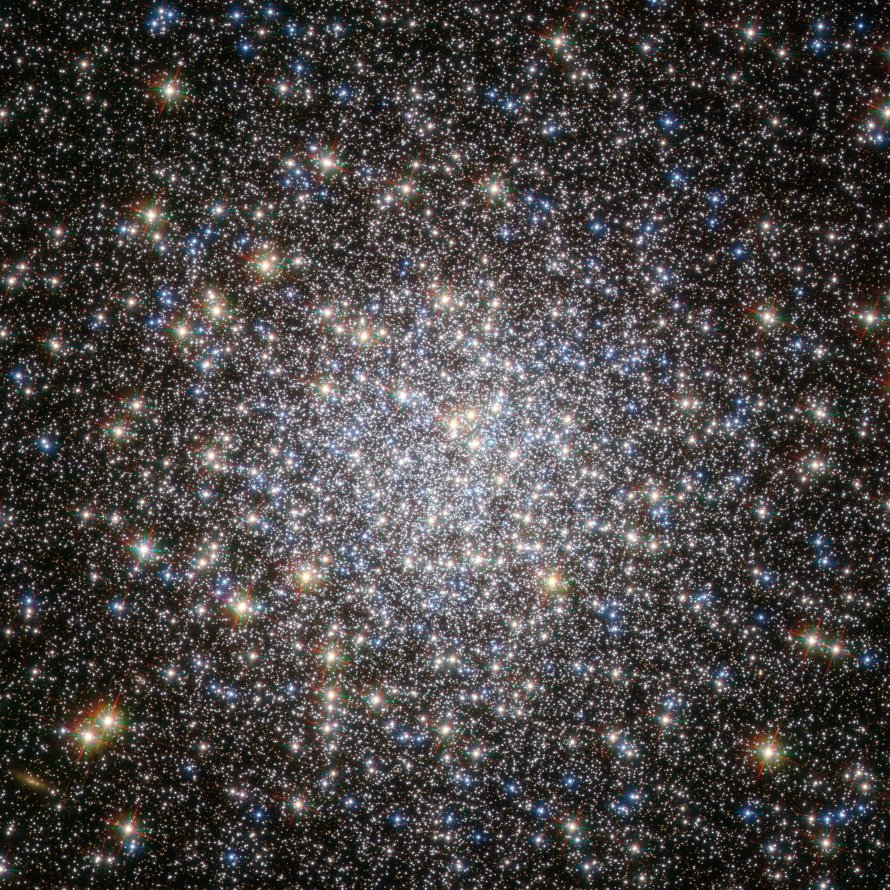M5 (NGC 5904)
Messier 5 (NGC 5904) is a globular cluster located in the constellation Serpens Caput, in the Galactic Center of the Milky Way Galaxy in the Local Group of galaxies. M5 is 24500 light years away from Earth.
M5 is best viewed during mid-summer, is magnitude 6.5, and can be viewed with binoculars. M5 is 23' in apparent size. For reference, the full moon is 30'.
Observing difficulty: Easy
- Name:
- Type:
- globular cluster
- Constellation:
- Serpens Caput
- NGC or IC:
- NGC 5904
- Magnitude:
- 6.5
- Viewing:
- binoculars
- Size:
- 23'
- Distance (light years):
- 24500 LY
- RA:
- 15h 18.6m
- Dec:
- 2 5'
- Season:
- mid-summer
- Milky Way location:
- Galactic Center
- Galaxy group:
- Local Group
- Messier Marathon #:
- 68
- Contains:
- 100,000+ stars
* The naked eye can see up to magnitude ~7-8 objects under ideal dark sky conditions.
A Stellar Symphony in Serpens
Tucked away in the constellation of Serpens, Messier 5, aka M5 or NGC 5904, is a vibrant globular cluster packed with hundreds of thousands of stars. As one of the oldest known globular clusters, M5 provides a rare snapshot of the ancient universe and serves as an exceptional laboratory for the study of stellar evolution and dynamics. This article offers an in-depth, technical examination of the fascinating world of Messier 5.
Discovery and Observation
M5 was first discovered by the German astronomer Gottfried Kirch in 1702 during an observation of a comet. The object was subsequently added to Charles Messier's catalog in 1764. Located roughly 24,500 light-years away from Earth, its dense core and numerous bright stars can be easily observed with binoculars or a small telescope.
Physical Characteristics
Spanning about 165 light-years in diameter, M5 is one of the largest known globular clusters. Its tidal radius, the region beyond which stars are no longer gravitationally bound to the cluster, is approximately 200 light-years. The core of M5 is densely populated with stars and has undergone a process known as core collapse, common in many globular clusters, resulting in a highly concentrated central region.
Stellar Composition
M5 is a stellar treasure trove, hosting roughly 500,000 stars. These stars are remarkably old, with an estimated age of about 13 billion years, indicating that they were formed when the universe was in its infancy. Consequently, the stars are predominantly metal-poor, consistent with the elemental abundance of the early universe. The majority of M5's stars are red giants, though a significant population of blue stragglers and variable stars can also be found.
Variable Stars and Stellar Evolution
M5 is particularly renowned for its high concentration of variable stars, with over 100 RR Lyrae variables and numerous Cepheid variables. These stars pulsate periodically, and their luminosity is directly linked to their pulsation period, making them excellent cosmic yardsticks for measuring astronomical distances. The study of these variable stars offers valuable insights into stellar evolution, providing a better understanding of the life cycles of stars and the mechanisms underlying their various stages.
Scientific Significance
The scientific importance of M5 cannot be overstated. Its diverse stellar population, age, and structural properties make it a perfect astronomical laboratory. M5 allows researchers to study a plethora of astronomical phenomena, from the processes of stellar evolution and dynamics to the conditions prevalent in the early universe. Moreover, its relative proximity to Earth and the large number of variable stars it hosts enable precise measurements, offering critical calibrations for distance and age determinations in cosmology.
Apparent Magnitude and Distance
M5 has an apparent magnitude of 5.6, making it almost visible to the naked eye under optimal observing conditions. The cluster resides about 24,500 light-years away from Earth. Its intrinsic brightness, combined with its relative proximity to our planet, makes M5 one of the most spectacular globular clusters in the night sky.
Finding and Observing Messier 5
Messier 5 can be found in the constellation Serpens Caput, not far from the star Unukalhai (Alpha Serpentis). Despite its relatively high magnitude, finding M5 might prove challenging for beginner stargazers due to Serpens Caput's low brightness and lack of easily identifiable star patterns.
However, once located, M5 is a remarkable sight. Small telescopes or binoculars reveal it as a faint, fuzzy star, while larger telescopes allow observers to resolve individual stars on the cluster's outskirts. Given its high concentration of variable stars, M5 offers a dynamic viewing experience as its overall brightness changes over time.



